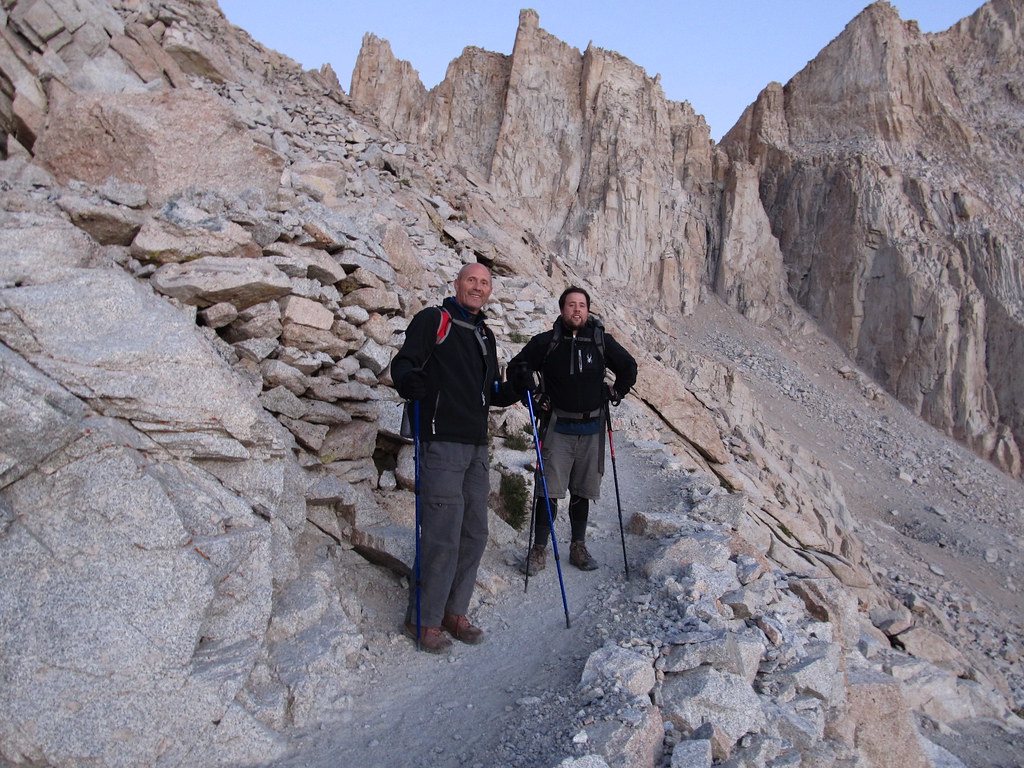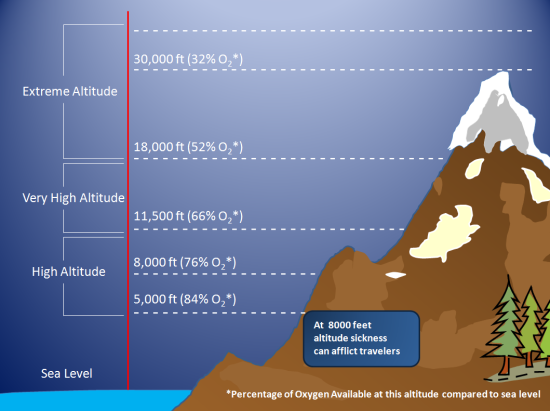How Can You Prepare for High-Altitude Trekking in Nepal?
How Can You Prepare for High-Altitude Trekking in Nepal? Preparing for a high-altitude trek in Nepal requires a thorough understanding of the challenges involved, careful planning, and dedication to training. High-altitude trekking offers stunning views and unique experiences, but it also presents dangers that can be mitigated through proper preparation. This comprehensive guide will delve into essential aspects of preparing for high-altitude trekking, including understanding altitude effects, acclimatization, physical fitness, gear selection, and mental preparedness.
Understanding Altitude and Its Effects on the Body
Before embarking on your trekking adventure, it’s essential to understand how high altitudes can impact your body. At sea level, the atmospheric pressure is about 1013 hPa (hectopascals), which means that the air is dense and your body can efficiently absorb the oxygen it needs. As you ascend to higher altitudes, the air pressure decreases, leading to a reduction in the amount of oxygen available for respiration.
The Impact of Altitude on Oxygen Levels
- At 3,000 meters (about 9,800 feet), the oxygen levels drop significantly, and your body may struggle to adapt. This can lead to various symptoms of altitude sickness.
- At 5,000 meters (about 16,400 feet), the risk of serious altitude-related illnesses increases. Here, your body faces even more challenges, such as increased heart rate and breathing rate, as it attempts to compensate for the lack of oxygen.
Understanding these changes in your body is crucial for your preparation, as it helps you identify the importance of gradual ascent and proper acclimatization.
Symptoms of Altitude Sickness
Altitude sickness, also known as Acute Mountain Sickness (AMS), can manifest in various forms. It is important to be aware of the symptoms so you can act quickly to avoid serious complications.
- Headaches: Often the first symptom to appear, these can range from mild to severe.
- Nausea and Vomiting: This can be a reaction to decreased oxygen levels and stress on the body.
- Dizziness: You may feel lightheaded or unsteady, affecting your balance.
- Fatigue: An overwhelming sense of tiredness can make even simple tasks feel daunting.
- Shortness of Breath: You may experience difficulty breathing, especially during physical exertion.
Being aware of these symptoms and knowing when to descend to a lower altitude can be life-saving.
Acclimatization is Key
Acclimatization is the process by which your body adjusts to lower oxygen levels as you gain altitude. This process is vital in reducing the risk of altitude sickness.
Gradual Ascent
To help your body acclimatize effectively, plan your trek with gradual elevation gains. This means ascending slowly and allowing your body time to adjust to the changes.
- General Rule: After reaching altitudes above 3,000 meters, avoid ascending more than 300-500 meters (about 1,000-1,500 feet) in a day.
- Monitor Your Progress: Keep track of how you feel during your ascent. If you start experiencing symptoms of altitude sickness, consider staying at the same altitude for an additional day.
Incorporating Rest Days
Rest days play a crucial role in acclimatization. When planning your itinerary, ensure that you include days where you do not ascend but stay at the same altitude to allow your body to adjust.
- Suggested Itinerary: If your trek includes multiple high-altitude points, designate certain days as rest days. For example, if you’re trekking to Everest Base Camp, plan to stay at Namche Bazaar for an extra day to acclimatize.
Hydration
Proper hydration is essential for acclimatization. Dehydration can exacerbate the effects of altitude sickness, so it’s crucial to drink plenty of fluids.
- Water Intake: Aim for 3 to 4 liters of water each day. This helps maintain your body’s hydration levels and supports your overall well-being during the trek.
- Hydration Sources: In addition to plain water, consider drinking herbal teas and soups, which can also help with hydration and provide warmth.
Physical Fitness and Endurance
Physical fitness is vital for successfully completing a high-altitude trek. A well-conditioned body can handle the stresses of long days of trekking, steep ascents, and changing weather conditions.
Training Regimen
Begin training several months before your trek. A comprehensive training regimen should include both cardiovascular and strength-building exercises.
- Cardiovascular Exercises: Activities like running, cycling, or swimming improve your lung capacity and overall stamina. Engage in these activities at least 3-5 times a week for optimal results.
- Strength Training: Incorporate exercises that build leg and core strength. Focus on exercises like squats, lunges, and deadlifts, which will help build the muscles needed for trekking.
Recommended Exercises
- Hiking or Walking Uphill: This is one of the best ways to simulate trekking conditions. Find local hills or mountains to hike regularly.
- Running or Jogging: Improves lung capacity and overall cardiovascular health. Aim for at least 30 minutes of running several times a week.
- Cycling: A great way to build leg strength and cardiovascular endurance. Try to incorporate longer rides as your fitness improves.
- Stair Climbing: If you live in a flat area, consider using stair climbers or simply finding stairs to climb. This helps simulate the uphill conditions of trekking.
Cross-Training
Cross-training is a valuable method to enhance your overall fitness and prevent injuries. Engage in various activities that complement your training regimen, such as:
- Swimming: Provides an excellent full-body workout that is easy on the joints.
- Yoga: Increases flexibility and core strength, which can be beneficial during your trek.
- Pilates: Focuses on core strength and stability, helping improve balance and posture on the trail.
Nutrition and Hydration
Proper nutrition plays a vital role in maintaining energy levels and overall health during your trek.
Hydration Strategies
Staying hydrated is not only crucial for acclimatization but also for maintaining energy levels throughout the day.
- Hydration Schedule: Set reminders to drink water regularly. Even if you’re not thirsty, taking small sips frequently can help prevent dehydration.
- Electrolytes: Consider adding electrolyte tablets or powders to your water, especially if you’re sweating heavily or trekking in hot weather.
Balanced Diet
Maintaining a balanced diet before and during your trek will help fuel your body.
- Carbohydrates: They are the primary source of energy. Focus on complex carbohydrates like whole grains, legumes, and fruits.
- Proteins: Essential for muscle repair and recovery. Include lean proteins such as chicken, fish, lentils, and dairy in your diet.
- Healthy Fats: Foods like avocados, nuts, and olive oil provide long-lasting energy and help with nutrient absorption.
Pre-Trek Meals
In the weeks leading up to your trek, prioritize nutrient-dense meals that provide sustained energy. Consider:
- Breakfast: Start your day with oatmeal topped with fruits and nuts for energy and fiber.
- Lunch: Choose whole-grain sandwiches or salads with lean protein, healthy fats, and plenty of vegetables.
- Dinner: Incorporate a variety of lean proteins, whole grains, and colorful vegetables for balanced nutrition.
Snacking
Keep energy levels up during the trek by having healthy snacks readily available.
- Energy Bars: Opt for bars that are high in carbohydrates and protein. Look for bars made from whole ingredients without added sugars.
- Dried Fruits: Lightweight and packed with energy, they are perfect for quick snacks on the trail.
- Nuts and Seeds: Rich in healthy fats and protein, they are excellent for maintaining energy levels.
- Nut Butters: Individual packets of almond or peanut butter are easy to carry and can provide a quick energy boost.
Learn to Recognize Altitude Sickness
Understanding and recognizing the symptoms of altitude sickness is vital for your safety.
Common Symptoms
- Headaches: Often a warning sign that you are experiencing altitude sickness.
- Loss of Appetite: A decrease in hunger can be common; however, it’s important to eat as much as you can to maintain energy levels.
- Difficulty Sleeping: Many trekkers experience sleep disturbances at high altitudes.
- Swelling: Watch for swelling of the hands, feet, or face, which can indicate altitude sickness.
Taking Action
If you experience mild symptoms, it’s crucial to take immediate action:
- Rest and Hydrate: Sit down, drink water, and allow your body to recover.
- Descending: If symptoms worsen or do not improve, you should descend to a lower altitude as soon as possible. Descent is the most effective treatment for altitude sickness.
Emergency Response
In extreme cases, altitude sickness can progress to High Altitude Cerebral Edema (HACE) or High Altitude Pulmonary Edema (HAPE), which are life-threatening conditions.
- HACE Symptoms: Severe headaches, confusion, difficulty walking, and loss of coordination.
- HAPE Symptoms: Shortness of breath at rest, coughing, and a feeling of tightness in the chest.
If you or someone in your group exhibits these symptoms, immediate descent is critical, and professional medical assistance should be sought.
Gradual Trekking Pace

Maintaining a slow and steady pace is essential when trekking at high altitudes.
Energy Conservation
Walking at a slower pace allows you to conserve energy for the long days ahead.
- Take Breaks: Schedule regular breaks to catch your breath and hydrate. Short, frequent breaks are more effective than longer, less frequent ones.
- Stay Hydrated: Use these breaks as opportunities to drink water and have a snack to keep your energy levels up.
Listen to Your Body
Pay attention to how your body responds to the altitude and exertion levels. If you start to feel fatigued, consider slowing down further or taking additional breaks.
Mental Preparedness
Mental resilience is just as important as physical preparation for a successful trekking experience. The challenges of high-altitude trekking can test your resolve, so developing a strong mental attitude is essential.
Building Resilience
Prepare mentally for the challenges you may face on the trail.
- Acceptance: Understand that discomfort and challenges are part of the trekking experience. Accepting this reality can help you stay focused and positive.
- Embrace the Journey: Focus on the experiences and the beautiful surroundings rather than solely on reaching the destination. Enjoy the scenery, the company of fellow trekkers, and the overall experience.
Developing a Positive Mindset
A positive mindset can significantly enhance your trekking experience.
- Focus on the Journey: Cultivate gratitude and appreciation for the beauty around you. This can help combat negative thoughts and keep your spirits high.
- Visualization Techniques: Visualize your success and imagine yourself completing the trek. This can enhance your motivation and mental preparedness.
Coping Strategies
Being prepared for the mental challenges of trekking is essential.
- Mindfulness and Breathing Techniques: Practicing mindfulness or meditation can enhance focus and manage anxiety. Incorporating breathing exercises can also help calm nerves before and during the trek.
- Setting Realistic Goals: Establish achievable goals for your trek. Focus on reaching specific milestones, such as a particular campsite or viewpoint, to maintain motivation.
Emergency Preparedness
Being prepared for emergencies is crucial for your safety while trekking at high altitudes.
First Aid Kit

Always carry a well-stocked first aid kit. Essential items to include are:
- Basic First Aid Supplies: Band-aids, antiseptic wipes, gauze, and adhesive tape for minor cuts and scrapes.
- Altitude Sickness Medication: Discuss with your doctor about bringing medications like Diamox (acetazolamide) to help prevent altitude sickness.
- Pain Relief: Carry over-the-counter pain relievers like ibuprofen or acetaminophen for headaches or discomfort.
Communication
Staying connected is important for safety.
- Satellite Phones or GPS Devices: Consider bringing a satellite phone or GPS device for emergencies, especially in remote areas without cell service.
- Trekking Group: Trekking with a group ensures that help is nearby in case of emergencies. Maintain communication with your group and inform them of any concerns.
Planning Your Itinerary
A well-structured itinerary will help ensure a smooth trekking experience.
Choose Your Route
Selecting the right trekking route is crucial. Popular routes like the Annapurna Circuit, Everest Base Camp, and Langtang Valley offer stunning landscapes and diverse experiences.
- Research the Route: Understand the distance, altitude, and difficulty level of your chosen route. Gather information from reliable sources, such as trekking forums, blogs, and guidebooks.
- Diverse Experiences: Consider routes that offer diverse landscapes, cultural experiences, and opportunities for interaction with local communities.
Length of Trek
Plan the duration of your trek based on your experience and fitness level.
- Shorter Treks: If you are new to high-altitude trekking, consider shorter treks like Gosaikunda or Ghorepani Poon Hill. These routes provide stunning views without the extreme altitudes.
Consult with Experts
Consider consulting with experienced trekkers or local guides to ensure that your itinerary is realistic and safe.
- Local Insights: Guides can provide valuable insights on route conditions, acclimatization tips, and potential hazards. They can also help you navigate the trails safely.
Preparing for high-altitude trekking in Nepal requires careful planning, physical fitness, and mental resilience. By understanding altitude effects, acclimatization strategies, and essential gear, you can set yourself up for a successful and rewarding trekking experience.
With proper preparation, you can embark on your adventure with confidence, ready to enjoy the breathtaking beauty of Nepal’s mountainous landscapes. Always remember that trekking is about the journey, not just the destination, and take the time to appreciate every moment of your adventure.
Your preparation will not only enhance your experience but also ensure your safety and well-being in the stunning yet challenging environment of Nepal’s high altitudes. Happy trekking!
Ready to Conquer the Mountains?
Are you excited to embark on a thrilling high-altitude trekking adventure in Nepal? At EBC Trek Dot Net, we specialize in providing unforgettable trekking experiences tailored to your needs. Our expert guides, personalized itineraries, and commitment to safety ensure that you have the journey of a lifetime.
Don’t let your dreams remain just dreams. Contact us today to plan your high-altitude trek and discover the breathtaking beauty of Nepal like never before. Whether you’re a seasoned trekker or a first-timer, we are here to help you every step of the way!
Book your adventure now and let the mountains call you!

